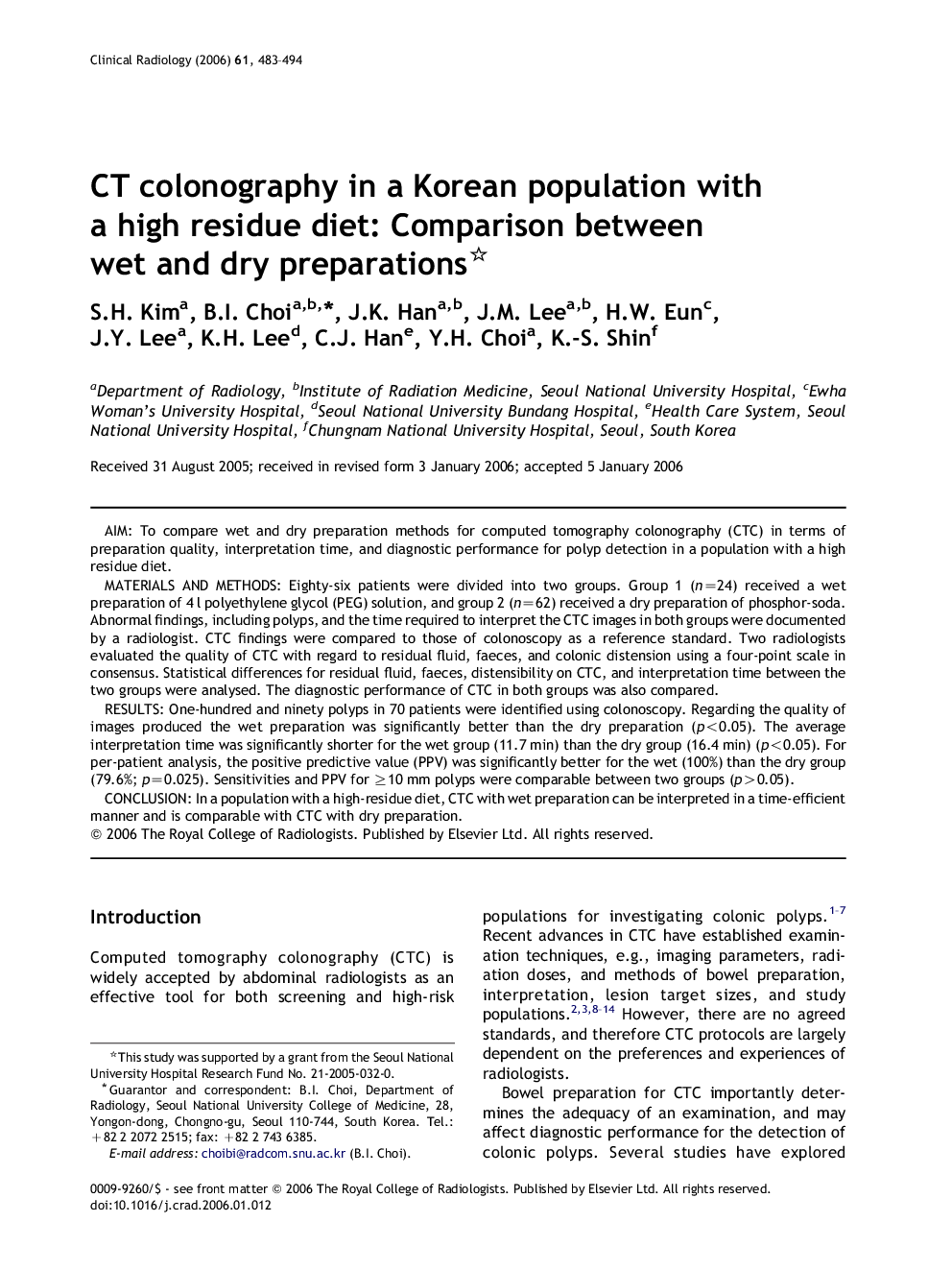| Article ID | Journal | Published Year | Pages | File Type |
|---|---|---|---|---|
| 3984232 | Clinical Radiology | 2006 | 12 Pages |
AIMTo compare wet and dry preparation methods for computed tomography colonography (CTC) in terms of preparation quality, interpretation time, and diagnostic performance for polyp detection in a population with a high residue diet.MATERIALS AND METHODSEighty-six patients were divided into two groups. Group 1 (n=24) received a wet preparation of 4 l polyethylene glycol (PEG) solution, and group 2 (n=62) received a dry preparation of phosphor-soda. Abnormal findings, including polyps, and the time required to interpret the CTC images in both groups were documented by a radiologist. CTC findings were compared to those of colonoscopy as a reference standard. Two radiologists evaluated the quality of CTC with regard to residual fluid, faeces, and colonic distension using a four-point scale in consensus. Statistical differences for residual fluid, faeces, distensibility on CTC, and interpretation time between the two groups were analysed. The diagnostic performance of CTC in both groups was also compared.RESULTSOne-hundred and ninety polyps in 70 patients were identified using colonoscopy. Regarding the quality of images produced the wet preparation was significantly better than the dry preparation (p<0.05). The average interpretation time was significantly shorter for the wet group (11.7 min) than the dry group (16.4 min) (p<0.05). For per-patient analysis, the positive predictive value (PPV) was significantly better for the wet (100%) than the dry group (79.6%; p=0.025). Sensitivities and PPV for ≥10 mm polyps were comparable between two groups (p>0.05).CONCLUSIONIn a population with a high-residue diet, CTC with wet preparation can be interpreted in a time-efficient manner and is comparable with CTC with dry preparation.
